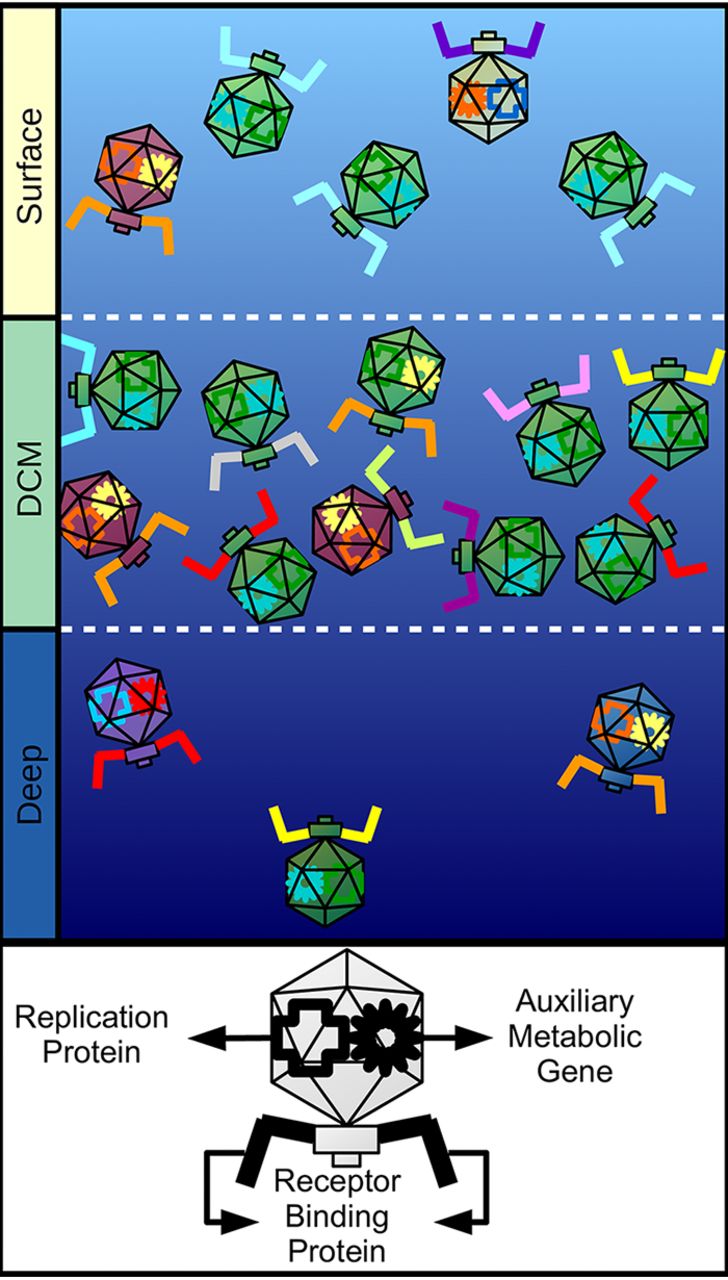Virome Bytes: Microdiversity of Mediterranean Sea Viruses

Hi! I'm Amelia Harrision, Pokémon master, Bioinformatics trainer, and workshop developer @ UD. Follow me on Twitter!
Virus microdiversity
Marine viruses are probably the most well-characterized group of environmental viruses. The oceans were one of the first ecosystems where the abundance and importance of environmental viruses was truly realized, and the relative ease of collecting viruses from seawater (as compared to, say, soils) has helped further their study in this environment. However, even within marine habitats, there’s still a lot that we don’t know about viruses and their ecology.
The microdiversity of viruses is a relatively new area of study in environmental viral ecology. Microdiversity, here, refers to mutation frequencies in genomes within the same population. It accompanies trends like the shift from OTUs to ASVs in focusing in on smaller differences in environmental DNA sequences. In a paper entitled Trends of microdiversity reveal depth-dependent evolutionary strategies of viruses in the mediterranean, Felipe Coutinho and colleagues use microdiversity to study the selective pressures exerted on viral genomes at different depths in the ocean and Mediterranean Sea.
Coutinho et al. examined four viral shotgun metagenomes (viromes) sampled from the surface, the deep chlorophyll maximum (DCM), and the bathypelagic. To increase their sample size, the researchers supplemented their own samples with viromes from the Tara Oceans expedition and Station ALOHA, which were also sampled over multiple depths. Microdiversity was measured using pN/pS ratios, similar to dN/dS ratios, which are calculated as the number of nonsynonymous polymorphisms per nonsynonymous site to the number synonymous polymorphisms per synonymous site.
Different depths, different selective pressures
The authors concluded that marine viruses at different depths show signs of being under different primary selection pressures.

In the deep ocean, where cells and viruses are found in lower numbers, viral metabolism proteins are under the greatest selection pressure. This is presumably to help increase traits such as burst size that would maximize the number of viral progeny produced, thereby increasing the likelihood that one of those phages encounters a suitable host.
In the DCM, viruses accumulate mutations in genes used for host recognition, so that they can expand their host range to compete with other phages. This is necessary because while phage populations in the DCM are large, this study found them to be highly clonal (low diversity). Having lots of copies of the same phage would presumably make competition for hosts intense and encourage host switching.
Viruses from the surface samples had, on average, the greatest number of mutations, but the lowest rates of microdiversity. The high rate of mutation was attributed to high levels of UV radiation in surface waters. The low rate of microdiversity may be due to the combination of relatively high viral counts combined with intermediate diversity. This would result in lower rates of competition for host cells and less need to increase traits like burst size, that may be more important in low cell count environments.
Overall, this is an interesting study that used environmental gradients to examine specific factors driving viral ecology and evolution in the natural environment.
Citation: Coutinho, FH. et al. Trends of Microdiversity Reveal Depth-Dependent Evolutionary Strategies of Viruses in the Mediterranean. mSystems 4 (6) e00554-19 (2019). doi: 10.1128/mSystems.00554-19.
If you enjoyed this post, consider sharing it on Twitter and subscribing to the RSS feed! If you have questions or comments, you can find me on Twitter or send me an email directly.
← Go back